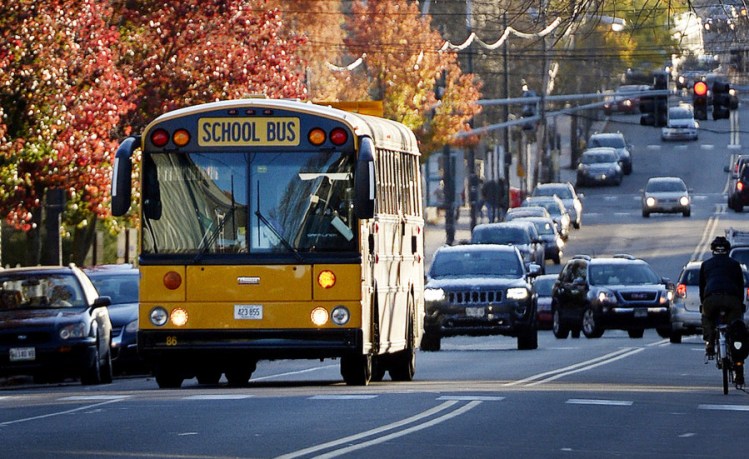The nation’s top highway safety official said Sunday that his agency has vowed to pursue a policy mandating that every school bus in the nation be equipped with three-point seat belts.
National Highway Traffic Safety Administrator Mark R. Rosekind used his keynote address at a conference of school transportation officials in Richmond, Virginia, to announce that his agency will focus research on the effectiveness of seat belts aboard school buses.
“Seat belts are icons of safety,” Rosekind said, “and that makes them the single most effective thing we can provide to improve the confidence of parents, policymakers and children.”
He stopped short, however, of ordering the start of the rule-making process, which is a required step to institute a mandatory policy.
On Monday, the National Highway Traffic Safety Administration staff refused to make additional comment, offering only Rosekind’s prepared remarks.
Six states – California, Florida, Louisiana, New Jersey, New York, and Texas – now have laws requiring seat belts to be installed on school buses. They will be the focus of part of the administration’s study, Rosekind said.
In 2007, a legislator from York County tried to add Maine to that list.
John Tuttle, a former Democratic representative from Sanford, filed legislation to require all new school buses purchased by Maine schools to have seat belts.
In an interview, Tuttle said state transportation and education officials opposed the bill. Financially, it also would have cost the state dearly.
“We require seat belts everywhere else, and we don’t require children to be seat-belted,” Tuttle said. “Unfortunately, the powers that be testified against it. I never understood the logic.”
The cost to taxpayers was estimated at more than $11 million annually, or roughly $7,000 to $11,000 per bus. The bill died in committee.
Rosekind’s remarks came during the annual summit for school transportation administrators, sponsored by the National Association for Pupil Transportation.
In a statement released Monday evening, the industry group thanked Rosekind for his candor, but disagreed and said that absent a federal mandate, the group prefers local control.
“Local officials are in the best position to decide whether to purchase seat belts, since these officials must weigh a multitude of unique considerations bearing on purchasing decisions, especially when faced with budgetary constraints,” the statement said.
At the national level, advocates have spent years asking for a mandatory seat belt rule, but to no avail.
The last time the National Highway Traffic Safety Administration was petitioned to initiate the rule-making process to mandate seat belts on school buses was in 2010, when the Center for Auto Safety and 22 other organizations and individuals asked for a wholesale re-examination of the rule. That petition cited a 1999 study by the National Transportation Safety Board, which found protection for bus passengers was insufficient, especially in side impacts and roll-overs.
A year later, the petition was denied because the safety administration had “not found a safety problem supporting a federal requirement for lap-shoulder belts on large school buses, which are already very safe,” according to a story in School Bus Fleet, an industry publication.
The National Highway Traffic Safety Administration insisted that the design of school buses, with their stoutly constructed, padded seats spaced close together, provides enough crash protection already, a concept known as compartmentalization.
In the 10-year period ending in 2012, the most recent statistical reporting period available, 174 school-age children died in school transportation-related crashes, according to the National Transportation Safety Board. Of those fatalities, 55 were children inside school vehicles, and 119 were pedestrians. By contrast in the same period, there were 348,253 fatal motor vehicle accidents across the nation, and less than 1 percent – 1,222 – involved a school transportation vehicle, with most fatalities occurring in other vehicles, not the buses.
But on Sunday, Rosekind, who was appointed in January, took aim at the conventional notion, challenging the assembled group of school transportation administrators to think about ways to make a national mandate possible.
“Every child on a bus seat without a seat belt means more risk of serious injury to precious cargo,” he said. “Everyone – NHTSA, state policymakers, local school districts, manufacturers – everyone with a stake in this needs to step up.”
Send questions/comments to the editors.



